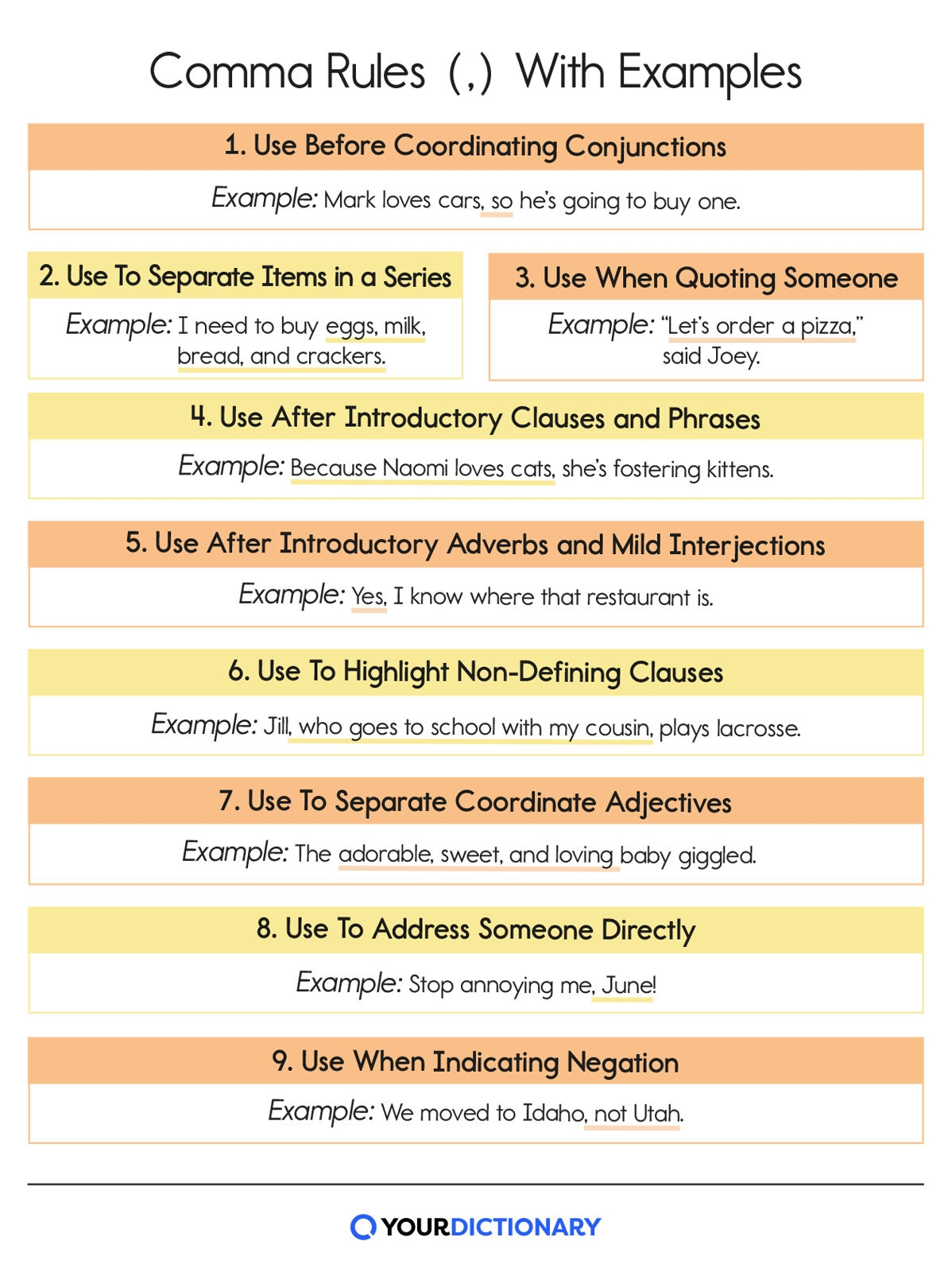In the English language, proper use of punctuation is essential for clear and effective communication. One of the most commonly used punctuation marks is the comma. Comma rules can be complex and often confusing, but mastering them is crucial for writing with clarity and precision.
Commas are used to indicate a pause in a sentence, separate items in a list, and clarify meaning. Understanding the rules of comma usage can greatly improve the readability of your writing.
English Grammar Comma Rules
1. Use a comma to separate items in a list. For example: “I need to buy apples, oranges, and bananas.” The comma before “and” in this sentence is known as the Oxford comma, which is optional but recommended for clarity.
2. Use a comma before a conjunction (such as “and,” “but,” or “or”) that connects two independent clauses. For example: “She wanted to go to the movies, but he preferred to stay home.” The comma before “but” helps to separate the two independent clauses.
3. Use a comma after an introductory phrase or clause. For example: “After the rain stopped, the sun came out.” The comma after “After the rain stopped” sets off the introductory phrase from the main clause.
4. Use a comma to set off non-essential information in a sentence. For example: “My brother, who lives in New York, is coming to visit.” The clause “who lives in New York” provides additional information but is not essential to the main meaning of the sentence.
5. Use a comma to separate adjectives that equally modify a noun. For example: “She wore a long, flowing dress.” The comma between “long” and “flowing” indicates that both adjectives equally describe the noun “dress.”
Mastering the rules of comma usage can significantly improve the clarity and effectiveness of your writing. By understanding when and how to use commas correctly, you can enhance the readability of your sentences and ensure that your meaning is conveyed accurately.
